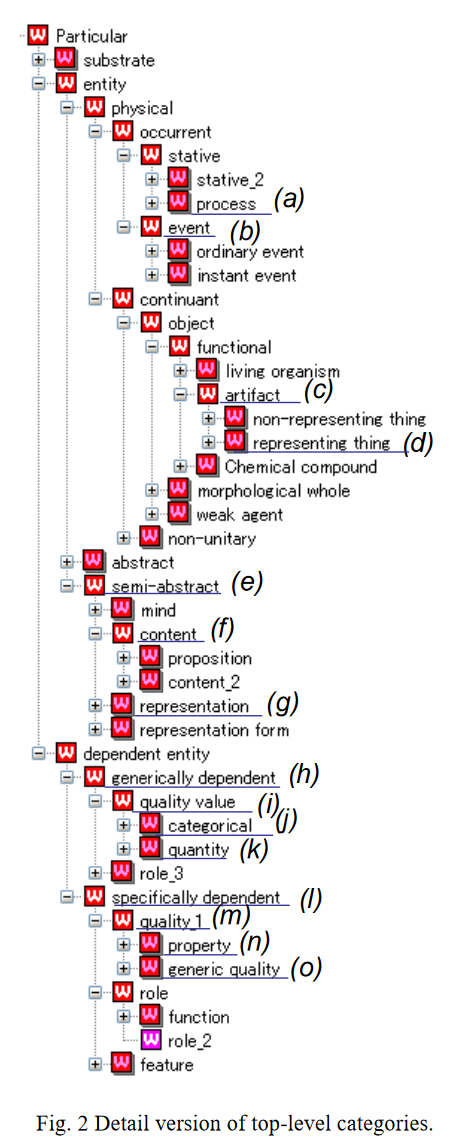Yamato
- implemented_in: Hozo
- url: https://drive.google.com/open?id=1-Q72r3Nhdc0XC6Z9Xcml-ATGbJnTwdlU&usp=drive_fs
- what as mess! diarrhea_value_2.large http://www.hozo.jp/owl/YAMATO20210808.miz.owl#diarrhea_value_2.large

Highlights
- YAMATO adopts single inheritance to make the taxonomic structure clean like BFO and DOLCE
- t.2024.03.23.21 (not a good sign) How does it make all the "basic distinction" without multiple inheritance?
- "Many of the multiple context-dependencies are covered using roles (Mizoguchi 2007). For the cases where genuine multiple inheritance is necessary, Hozo (Kozaki 2010) prepares IS-A relation which is nothing to do with identity problem of instances but only with property inheritance"
- Many of the existing upper ontologies are too simple to explain the reality and to guide domain people to build their ontologies. What they need are not only distinction between objects and qualities but also that between quality and quantity and that between quality and description of quality, not only that between objects and representation but also that between a copy of book and book and that between a novel and a musical score, and not only that between process and event but also that between a pulse and a sequence of pulses and that between to grow and to cut, etc. They also need to know how much similar a procedure and a piece of music are in what sense, why events cannot change while processes can, etc
Basic distinctions
(1) Substrate and entity Space and time are indispensable for things to exist in the world, while these two can exist independently of entities. Such independence is essential and differentiates the two from entities that inherently need these two to exist in the real world. Matters are less basic than space and time, but it still is very substrate-like because every physical individual is made of/from matter.
(2) Entity and property
(3) Physical and abstract
(4) Continuant vs Occurent
(5) Entity and relation
Relation is sometimes considered as abstract. But it is not true, though it is something in the higher order than an entity, that is, entities first exist and relations are something found between entities. An example is the marital-relation with Mr. A and Ms. B that is time-dependent and hence cannot be abstract... People sometimes confuse relation as a formalism with relation as an existing thing. Typical examples are action and attribute that are sometimes formalized as a relation because an action is often formalized as one between an actor and an object and an attribute as one between an object and a value. But, of course, they are not relations ontologically. They are intrinsically entities included in an ontology.
(6) Informational object vs. non-informational object (Representation and non-representation) Informational object and symbols are usually dealt with in semiotics rather than in ontology. However, from the real-world modeling point of view, we need to deal with informational object in our ontology, since there apparently exist music, novels, texts, symbols and so on in the real world. Informational object and non-informational object (object, process, relation, attribute, etc.) are very different from each other. For the informational object, it is not easy to identify what their instances are. For example, what an instance of a piece of music is, what an algorithm is, how both are similar ontologically, etc. need some in-depth consideration.
References
Backlinks